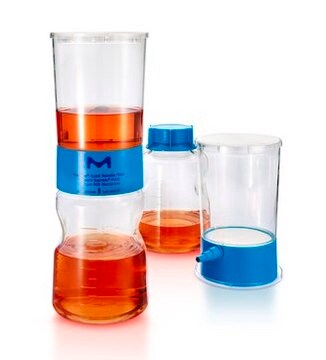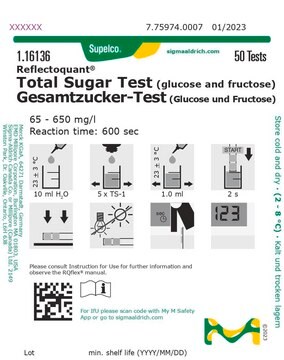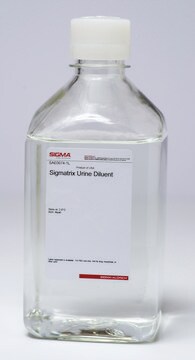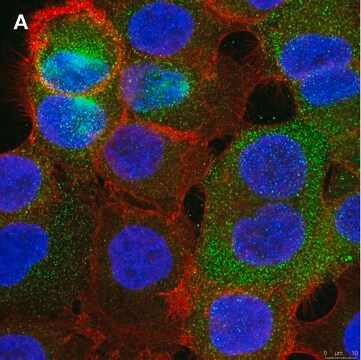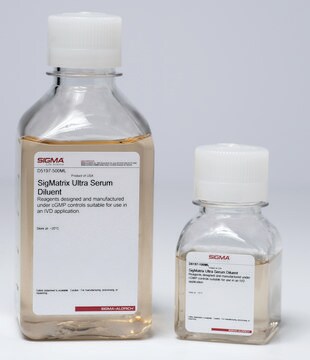MAB1217F
Anti-FMC-7 B-Cell Lymphocyte Marker Antibody, clone FMC-7, FITC conjugated
clone FMC-7, Chemicon®, from mouse
Synonym(s):
Anti-FMC-7, B-Cell Marker Detection, FITC Anti-FMC-7
Sign Into View Organizational & Contract Pricing
All Photos(4)
About This Item
UNSPSC Code:
12352203
eCl@ss:
32160702
NACRES:
NA.41
Recommended Products
biological source
mouse
Quality Level
conjugate
FITC conjugate
antibody form
purified immunoglobulin
clone
FMC-7, monoclonal
species reactivity
human
manufacturer/tradename
Chemicon®
technique(s)
flow cytometry: suitable
isotype
IgM
shipped in
wet ice
target post-translational modification
unmodified
General description
B cells are lymphocytes that play a large role in the humoral immune response as opposed to the cell-mediated immune response that is governed by T cells. The principal function of B cells is to make antibodies against soluble antigens. B cells are an essential component of the adaptive immune system. FMC-7 B-Cell Lymphocyte Marker is a 105 kDa B cell restricted antigen which is expressed on about 50% of adult human peripheral blood B cells. Upon in vivo B cell activation FMC7 expression initially increases. B cells involved in antibody secretion have lost the FMC7 determinant. The monoclonal antibody FMC7 delineates a subpopulation of B lymphocytes in normal blood. Expression of the antigen recognized by FMC7 appears to be maturation-linked, and it serves to distinguish different types of B cell leukemia.
BIOCHEMISTRY: p I = 7.4
Specificity
The FMC-7 antibody was not clustered at the 5th Leucocyte Typing Workshop held in Boston USA 1993. This antibody detects a glycoprotein of 105kD found on circulating B-lymphocytes (Brooks et al., 1981). Studies on normal lymphocytes, leukaemic cells and cell lines indicate that FMC-7 is a marker for a limited segment of the B cell maturation pathway (Catovsky et al., 1981; Zola et al., 1984). This glycoprotein is expressed in varying degrees on normal circulating B-cells, chronic B-cell leukaemia (B-CLL), prolymphocytic leukaemia (PLL) and other B cell neoplasias (Zola et al., 1984, 1987; Bloem et al., 1988; Melo et al., 1988; Ferro & Zola, 1990; Mulligan, 1990; Zola et al., 1991; Burthem & Cawley, 1994; Huh et al., 1994). It labels the same population as CD22 antibodies but reacts with a different antigen (Zola et al. 1987).
Cell reactivity:1
Stains peripheral blood B lymphocytes and tonsil B lymphocytes. No reaction with granulocytes, monocytes, platelets, erythrocytes, T lymphocytes or null cells. Reacts with HRIK and Raji cell lines.
Clinical9,12,13 Expression
B cell prolymphocytic leukemia (B-PLL) Strongly positive
Hairy cell leukemia (HCL) Strongly positive
Hairy cell leukaemia variant (HCL-V) Strongly positive
Splenic lymphoma with villous lymphocytes (SLVL) Positive
B cell chronic lymphocytic leukaemia (B-CLL) Negative to weakly positive
Cell reactivity:1
Stains peripheral blood B lymphocytes and tonsil B lymphocytes. No reaction with granulocytes, monocytes, platelets, erythrocytes, T lymphocytes or null cells. Reacts with HRIK and Raji cell lines.
Clinical9,12,13 Expression
B cell prolymphocytic leukemia (B-PLL) Strongly positive
Hairy cell leukemia (HCL) Strongly positive
Hairy cell leukaemia variant (HCL-V) Strongly positive
Splenic lymphoma with villous lymphocytes (SLVL) Positive
B cell chronic lymphocytic leukaemia (B-CLL) Negative to weakly positive
Immunogen
The human B-lymphoblastoid cell line, HRIK.
Application
Research Category
Inflammation & Immunology
Inflammation & Immunology
Research Sub Category
Immunoglobulins & Immunology
Immunoglobulins & Immunology
This Anti-FMC-7 B-Cell Lymphocyte Marker Antibody, clone FMC-7, FITC conjugated is validated for use in Flow Cytometry (FC) for the detection of FMC-7 B-Cell Lymphocyte Marker.
This antibody can be used for the differentiation of PLL from B-CLL. It is also useful in confirmation of the diagnosis of other disorders such as HCL, HCL-V and SLVL. Useful for the detection of residual disease in patients undergoing treatment for these disorders.
SUGGESTED USAGE:
Flow cytometry - use 10 μl direct from the vial per 100 μl of whole blood, or 1 x 10E6 peripheral blood mononuclear cells (PBMC) in 100 μl buffer.
SUGGESTED USAGE:
Flow cytometry - use 10 μl direct from the vial per 100 μl of whole blood, or 1 x 10E6 peripheral blood mononuclear cells (PBMC) in 100 μl buffer.
Target description
105 kDa
Linkage
Replaces: CBL1416F
Physical form
The antibody is supplied in 1.0 ml 0.1M Tris-HCl, 0.5M NaCl, 10mM glycine, pH 8.0, containing 0.2% bovine serum albumin and 0.1% sodium azide. The characteristics of each lot are tested by electrophoresis and flow cytometry.
Storage and Stability
Store at 2 to 8°C, for up to 6 months. DO NOT FREEZE. Protect from light.
WARNING: The monoclonal reagent solution contains 0.1% sodium azide as a preservative. Due to potential hazards arising from the build up of this material in pipes, spent reagent should be disposed of with liberal volumes of water.
WARNING: The monoclonal reagent solution contains 0.1% sodium azide as a preservative. Due to potential hazards arising from the build up of this material in pipes, spent reagent should be disposed of with liberal volumes of water.
Analysis Note
Control
Human peripheral blood lymphocytes, HRIK and Raji cell lines
Human peripheral blood lymphocytes, HRIK and Raji cell lines
Legal Information
CHEMICON is a registered trademark of Merck KGaA, Darmstadt, Germany
Disclaimer
Unless otherwise stated in our catalog or other company documentation accompanying the product(s), our products are intended for research use only and are not to be used for any other purpose, which includes but is not limited to, unauthorized commercial uses, in vitro diagnostic uses, ex vivo or in vivo therapeutic uses or any type of consumption or application to humans or animals.
Storage Class
12 - Non Combustible Liquids
wgk_germany
nwg
flash_point_f
Not applicable
flash_point_c
Not applicable
Certificates of Analysis (COA)
Search for Certificates of Analysis (COA) by entering the products Lot/Batch Number. Lot and Batch Numbers can be found on a product’s label following the words ‘Lot’ or ‘Batch’.
Already Own This Product?
Find documentation for the products that you have recently purchased in the Document Library.
Our team of scientists has experience in all areas of research including Life Science, Material Science, Chemical Synthesis, Chromatography, Analytical and many others.
Contact Technical Service


